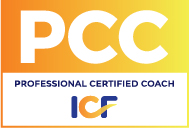Working in a space where you’re losing customers, your sales are down, or you feel like you’re a cog in a machine, absolutely sucks. You’re familiar with why it sucks because you’ve been living it. The dread of Sunday night, and knowing what the next morning brings, but the delights of looking forward to Friday afternoons just aren’t enough anymore. That paycheck is the big reason which keeps you coming back for more. What to do about it though, is a challenge for you as a leader or a member of a team, because the answer isn’t obvious. Let’s look at some of the details behind what’s happening and consider how you might approach your perspective a different way.
You don’t know what you’re talking about
“You haven’t been here long enough to know what you’re taking about.” Have you heard that line thrown around before? There’s this long-standing idea that you need experience working in the specific area, doing the thing, to be able to provide quality feedback or respectable new solutions to problems. Your questions and ideas challenge the status quo, alerting those with tenure to the notion that you won’t just “tow the party line”. You’re willing to shake things up, because let’s face it, you don’t have the loyalty and attachment to keeping things the same when they’re obviously not working well. The way things have always been done, provides certainty and gives a sense of status to those who uphold the idea. Doing things different means change, or acknowledgement that something has been out of alignment for a long time. The upholding of this belief system and practices is a contributor to inequalities experienced by employees. How committed do you think your team is to improvement, compared keeping things predictable and familiar? What are you, or they, prepared to do about it?
Rising through the ranks as a form of credibility, is another overvalued belief and status quo practice. This isn’t to say that rising through the ranks is bad or ineffective, it does come with caveats though. Learning the business of your organization can be a great asset overall, provided the learning experience is well rounded. How do you know your newer employees are being taught solid and sustainable habits, which will contribute to the long-term success of the organization? What testing mechanism is in place to test for this? Sometimes your tenured employees were left to find their own way in learning how to do their jobs, because their mentors passed on their own experience. The reasoning of “that’s how I was taught to be successful, I had to figure it out on my own” is what you’ll hear tenured employees say to the newer hires. Are you getting a better feel for where we’re going here? These subtleties matter!
Due to the Pandemic of 2020 the economy is struggling, and organizations are challenged by the practice of using seniority to manage layoffs or workforce reductions. It has been a fair practice in unionized workforces for decades, and now it presents an issue of equity. See, many organizations have made intentional efforts to be more intentional in their hiring practices in recent years. Increasing diversity has been the goal, and you may have noticed that some industries and organizations have made significant progress. As layoffs start to become the inevitable choice for organizations the old practice of seniority will be applied, and there’s a glaring problem to address. Seniority means the last person hired in a job category is the first person to be let go. Guess what happens to all the efforts made in the intentional diversity hiring practices? Poof, gone over night! Unless the application of seniority practices is examined with an equity lens, you will witness the impacts of doing things the way they’ve always been done. This overall resistance to change is slowing sinking your business, no matter what industry it’s in. How does that idea sit with you? What are you empowered to do about it?

Not enough resources
A few years back I worked in an office environment, Cubetopia. There were rows of cubes four deep, with the lucky window cubes on each side of the aisle. My row and the adjacent row had low (5 foot) walls as dividers. This meant you could stand up and talk to your neighbors on the other side of the wall, in the next row over. A great setup for collaboration across teams, if the teams were that closely related in their work. For the teams who weren’t closely related, like mine, it was a point of distraction, especially if you were my neighbor and had to hear all my work-related technical conversations all day every day. For those who knew they were distracted easily, headphones or ear plugs was the simple solution. For others, the belief was that surrounding noise in the office shouldn’t be loud enough or frequent enough to need headphones or ear plugs. The decision was made to change the shared wall from the low (5 foot) version to the standard (6 foot) version. Sounds simple right? Well it is in theory and would have been if the decision makers did a robust cost analysis. Instead, they went for the “cheapest” option. How often you have you chosen the cheapest option, and ended paying more when the dust settled? Those backend costs can be exponentially more when you’re not careful in your assessment.
The “cheapest” option was to trade out the low walls for the high walls, over the weekend when no one was working. For this option to work, eight of us who shared this wall had to pack up our cubes. The movers would move us out of the cubes, swap out the walls, then move us back in. This moving meant each of us had to spend time during the week packing up our cubes in boxes and label each one. We were provided time to pack during work hours, which meant anytime spent packing, was time not producing work product. Totally fair for us as employees. I had only been there a few years, so I hadn’t accumulated much stuff. My neighbor, however, was nearing retirement with over 20 years of service. That meant there was a lot of stuff to sort through and pack, as you would expect for being in the same location for many years. It took them most of the work week to get packed up. All of us spending time packing over the 40-hour work week cost the organization in lost productivity. Eight people at an average of $80k per year, prorated for that week, adds up fast. I did the math and that labor alone was quite a bit, in addition to the cost of the movers and the walls swap. In case you’re wondering, YES there was an alternative to all of this! At that time, in other areas of the floor, some cube walls had a plexiglass topper. It was like a window which was 1 foot tall or so, think of it as a wall height extender. All the movers had to do was install those of top of the existing wall, and problem solved. Somehow that option was calculated as more expensive, than paying us to pack up to be “moved” and then unpack the next week after the movers swapped out the walls.
When you’re making decisions based on how much resources said decision will cost, how often are the short-term costs and long-term costs being compared? What about the time employees spend from beginning to end, executing the decision? I suggested the 1-foot wall topper option in the scenario above, and after giving the rough packing labor costs off the top of my head, I was hit with “you haven’t been here long and don’t know how all this works”. There was no win to be had in arguing for me, and I didn’t have enough influence to find out all the calculations associated with this decision. It has stuck with me that being new is looked down upon as a practice. What’s lessons are you taking away from that scenario? How will they influence your approaching in the future?

Change it up
Change takes work, its effort, it’s hard, and it’s constant. Keeping things the same is what has been contributing to your challenges. Are you looking for the most effective decision each time you need to make one, or are you looking to stay comfortable and in familiar territory? What is comfort currently costing you in all resource (time, money, employees) areas? What are you afraid of when it’s comes to change? Be honest, no one is listening right now. That honesty is what’s missing in your equation to find solutions. What ideas have others come up with, that you’ve dismissed? What was your reasoning for dismissing them at the time? What if even part of those ideas held the answer to turning the trajectory of your organization or team around? How much do you have to lose with efforts in finding effective solutions? On a scale of 1 to 10, how much more can you afford to lose by continuing to keep the status quo?




